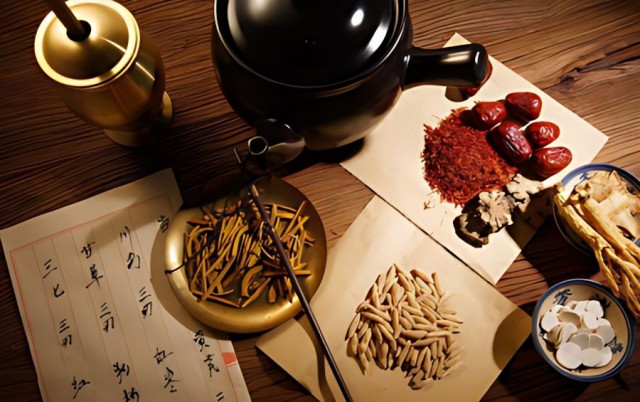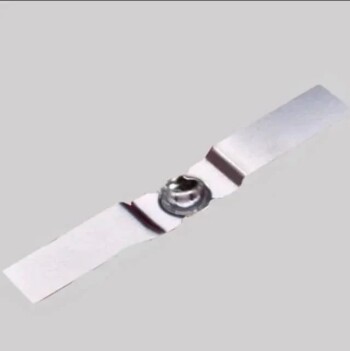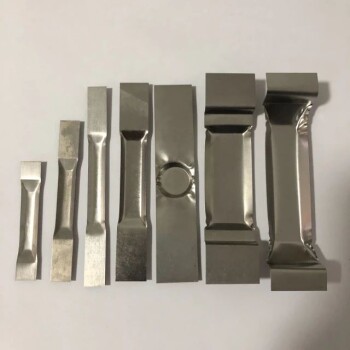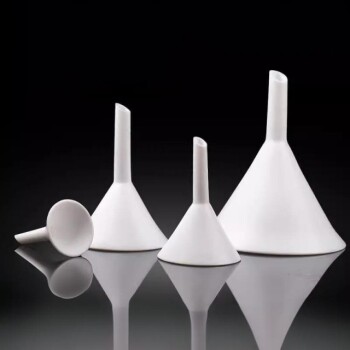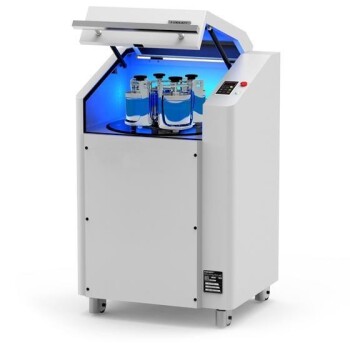旋转蒸发仪简介
定义和功能
旋转蒸发仪通过蒸发和去除部分提取溶剂,在中药提取物浓缩过程中发挥着重要作用。这一过程大大提高了提取物中溶质的浓度,增强了提取物的效力和功效。旋转蒸发仪的工作原理是在真空条件下将溶液加热到沸点,使溶剂有效蒸发。然后冷凝并收集溶剂蒸汽,保留剩余的浓缩提取物以备进一步加工或使用。
这种浓缩方法对中药提取物特别有利,因为它能够处理在较高温度下可能会降解的精细化合物。旋转蒸发仪提供的受控环境可确保提取物中的活性成分在整个浓缩过程中保持稳定和完整。此外,蒸发器的旋转运动还能在蒸发瓶表面形成一层溶液薄膜,从而提高蒸发速度并提高整体效率。
旋转蒸发仪的功能不仅限于浓缩,还在中药制剂的精制和标准化方面发挥着重要作用。通过持续获得更高的溶质浓度,这些设备有助于最终药品的均匀性和质量控制。这对于确保每批中药制剂都符合规定的标准并提供一致的治疗效果至关重要。
总之,旋转蒸发仪是传统中药领域不可或缺的工具,为浓缩提取物提供了可靠而高效的方法,同时还能保持其活性成分的完整性。旋转蒸发仪能够在受控条件下运行,其高效的传热机制使其特别适合中药精制的独特要求。
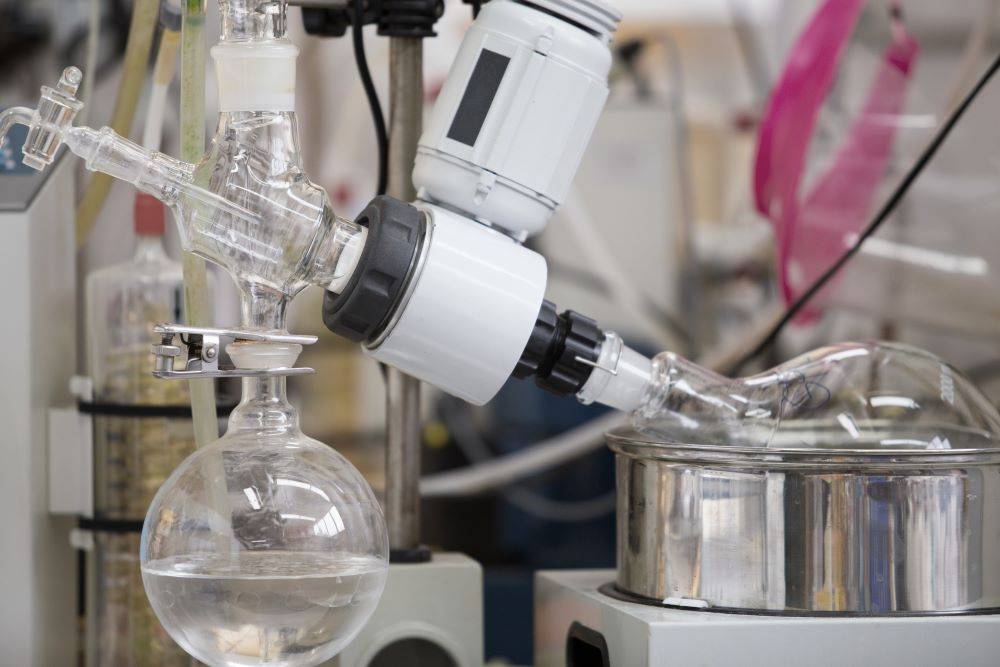
蒸发的特点
蒸发工艺有几个显著特点,这些特点对于理解其在中药提取物浓缩中的应用至关重要。其中一个主要特点是,由于非挥发性溶质的存在,溶液的沸点会升高。这种现象被称为沸点升高,发生的原因是溶质干扰了溶剂的蒸发能力,因此需要更高的温度才能达到相同的蒸发率。
另一个重要方面是材料和工艺的特定影响。不同的溶剂和溶质会与蒸发设备产生独特的相互作用,从而导致效率和能耗的变化。例如,溶剂的类型(如水、酒精)和溶质的性质(如离子、非离子)会极大地影响热传导系数和蒸发过程的总体能耗要求。
能耗是蒸发过程中的一个重要考虑因素。加热溶液和维持必要的真空条件所需的能量可能非常大。这种能源需求受多种因素的影响,例如溶液的初始浓度、所需的最终浓度以及热传导机制的效率。因此,优化能源使用对于旋转蒸发仪的成本效益和可持续运行至关重要。
总之,蒸发的独特特性,包括沸点升高、特定材料的影响和大量能源消耗,在使用旋转蒸发仪提炼中药提取物的过程中起着关键作用。了解这些方面对于设备的高效和有效运行至关重要。
蒸发设备
蒸发器的分类
蒸发器是蒸发设备的核心,根据影响其运行和效率的几个关键参数进行分类。这些分类主要围绕 压力条件 , 二次蒸汽的利用 和 运行类型 .
压力条件
- 常压蒸发器:在标准大气压下运行,适用于对压力控制要求不高的通用场合。
- 加压蒸发器:在高压下运行,沸点更高,因此在特定应用中传热效率更高。
- 减压(真空)蒸发器:在减压状态下运行,可降低溶液的沸点,非常适合用于热敏性材料,如中药提取物。
利用二次蒸汽
- 单效蒸发器:直接使用沸腾溶液产生的蒸汽,然后将其冷凝,不再继续使用。
- 多效蒸发器:采用多个蒸发器串联的原理,利用一个蒸发器的蒸汽加热下一个蒸发器,从而显著提高能源效率。
运行类型
- 循环蒸发器:循环式蒸发器:循环运行,定期浓缩溶液,然后移除,适用于批量工艺。
- 单程蒸发器:连续运行,溶液只需流经蒸发器一次,即可达到所需的浓度,适用于连续生产线。
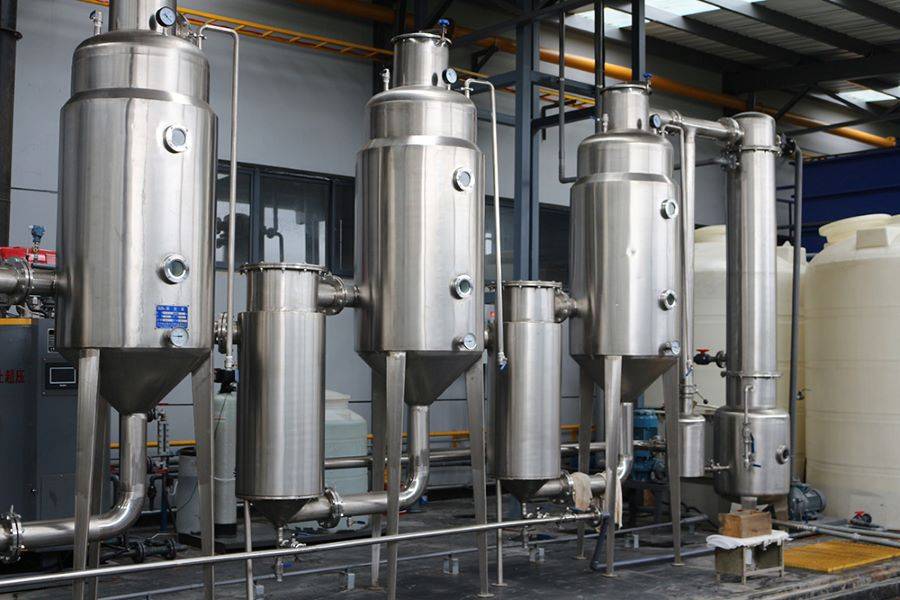
每种分类都有其独特的优势,要根据所处理材料的具体要求、运行规模以及所需的效率和安全考虑因素来选择。
选择标准
在选择用于中药提取物精制的蒸发设备时,必须考虑几个关键因素,以确保最佳性能和效率。主要标准包括设备的结构完整性、蒸发区域的大小、运行效率、对各类药液的适应性以及能耗。
结构完整性
蒸发设备的结构必须坚固耐用、设计合理,以承受蒸发过程中的苛刻条件。坚固的框架可确保长期的可靠性,并降低机械故障的可能性。
蒸发面积
更大的蒸发面积可以更有效地处理更大量的液体。这对于以溶质浓缩为关键目标的中药精制尤为重要。
操作效率
高效蒸发对于最大限度地减少处理时间和能耗至关重要。能够在不影响药用化合物完整性的前提下实现快速蒸发的设备是非常理想的。
适应性
设备应具有足够的通用性,可处理各种药液,每种药液都有其独特的性质。这种适应性可确保在精制过程的不同阶段使用相同的设备,从而减少对多个专用设备的需求。
能源效率
能源消耗是一个重要的考虑因素,尤其是在大规模运营中。高能效设备不仅能降低运营成本,还能将精炼过程对环境的影响降至最低。
通过仔细评估这些标准,我们可以为中药提取物的浓缩和精制选择最合适的蒸发设备,从而确保效果和效率。
旋转蒸发仪详情
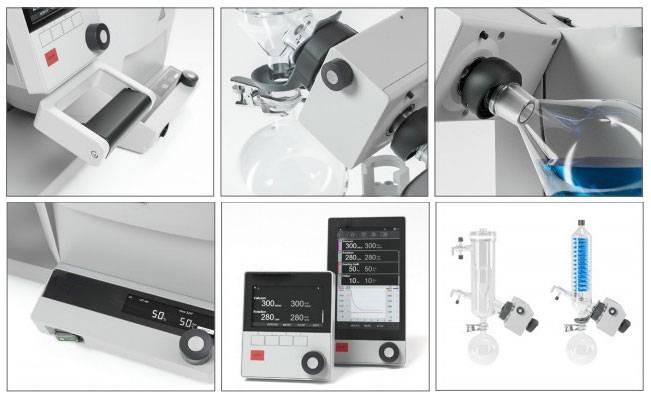
结构部件
旋转蒸发仪是一种精密设备,设计用于高效去除溶剂和浓缩溶液。其核心部件包括
- 主机单元:旋转蒸发仪的主体,负责容纳驱动旋转和保持真空的电机和控制系统。
- 玻璃器皿:对于保持工艺的纯度和化学完整性至关重要,蒸发烧瓶和冷凝器等玻璃部件是系统不可或缺的部分。
- 恒温槽:该部件可确保均匀加热,在整个过程中保持温度一致,从而实现可控、高效的蒸发。
- 连接器和阀门:各种连接器和阀门对系统的功能至关重要,可实现对液体和气体流量的精确控制,并确保真空的完整性。
这些部件在旋转蒸发仪的高效运行中发挥着重要作用,有助于提高中药提取物的浓缩和精制效率。
运行原理
在真空条件下,旋转蒸发仪通过加热浴槽和旋转蒸发瓶来运行。旋转会在蒸发瓶内壁形成一层薄而均匀的薄膜,从而大大增加了可用于蒸发的表面积。真空环境降低了溶剂的沸点,从而可以在较低温度下进行高效蒸发。
蒸发后的溶剂通过冷凝器冷却成液态。冷凝后的溶剂被收集起来,可以循环使用。整个流程的设计旨在最大限度地提高蒸发率,同时最大限度地降低能耗和溶剂损耗。
为了进一步说明该工艺的效率,请考虑以下几点:
- 增加表面积:烧瓶的旋转可确保较大的表面积持续暴露在加热浴中,从而加快蒸发速度。
- 降低沸点:真空降低了系统内的压力,从而降低了溶剂的沸点,使蒸发温度大大低于其大气沸点。
- 能源效率:与传统蒸发方法相比,旋转蒸发仪在较低温度和真空条件下工作,能最大限度地降低能耗。
这一系列因素使旋转蒸发仪成为浓缩和提炼传统中药提取物的理想工具,确保了高效率和最少的溶剂浪费。
操作要求
为确保旋转蒸发仪高效安全地运行,必须严格遵守几个详细步骤。首先要进行彻底的 使用前检查 .这包括检查所有玻璃部件的完整性,确保真空系统正常运行,并确认加热槽中装有适当的液体。任何磨损或损坏迹象都应立即处理,以防止出现运行故障。
接下来是 蒸发烧瓶的装载和加热 至关重要。装有待浓缩溶液的蒸发瓶被牢固地安装在旋转蒸发仪上。然后启动系统,烧瓶以可控速度旋转,在其内壁上形成一层薄膜。这层薄膜增加了蒸发的表面积,从而提高了工艺的效率。同时,将加热浴调节到所需温度,确保溶液受热均匀,不会造成热损伤。
调整 浴槽高度 是另一个重要步骤。加热浴相对于蒸发瓶的高度必须精确设置,以优化热传递。如果浴槽过高,可能会导致过热,并可能损坏溶液。反之,如果过低,则会影响传热效率,导致蒸发速度减慢。为了保持最佳条件,有必要对该参数进行持续监控和微调。
最后、 最后 溶液,以保持稳定的浓缩过程。这种技术包括在溶剂蒸发时向蒸发瓶中添加新鲜溶液,确保浓缩过程不间断。连续进料需要小心控制,以避免系统超载,并保持所需的浓度水平。
通过遵循这些详细步骤,操作员可以确保旋转蒸发仪高效、安全、有效地浓缩和提炼中药提取物。
清洁程序
每次使用后,旋转蒸发仪必须经过细致的清洁过程,以保持其效率和使用寿命。第一步是用纯净水彻底冲洗设备,去除残留的溶剂或萃取剂。这样可以确保没有污染物残留,以免影响后续操作或损害未来萃取的纯度。
冲洗后,旋转蒸发仪上的所有端口和连接处都应该用干净的塑料袋仔细密封。这一预防措施可防止灰尘和其他微粒在设备上沉积,否则会导致污染或操作效率低下。此外,建议在塑料袋上粘贴清洁的识别标签。这种标签有多种用途,包括注明上次清洁日期、识别特定设备以及提供对下一个用户可能有用的任何其他相关信息。
通过遵守这些清洁程序,用户可以确保旋转蒸发仪保持最佳状态,为下一轮中药提取浓缩和精制做好准备。
安全和维护
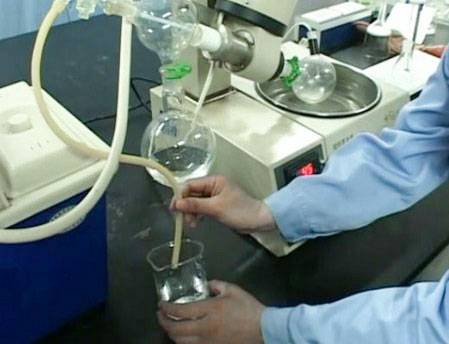
安全注意事项
在操作旋转蒸发仪时,遵守正确的安全规程对于确保设备的完整性和用户的安全至关重要。关键的安全措施包括严格遵守启动和停止设备的正确顺序。这一顺序至关重要,因为它可以防止压力骤变和潜在的设备损坏。
此外,在操作前必须确保恒温水浴槽内注有足够的水。这一步骤对于保持稳定的温度控制至关重要,而温度控制对于溶剂的有效蒸发至关重要。适当注水可防止水浴过热,并确保蒸发过程保持稳定和在安全参数范围内。
保持连接器的气密性是另一项至关重要的安全措施。系统中的泄漏会导致压力波动,影响有效蒸发所需的真空条件。定期检查和维护连接器可以防止出现此类问题,确保稳定和安全的操作环境。
总之,遵守这些安全预防措施--坚持正确的启动和停止顺序、确保恒温水浴槽充满水以及保持连接器的气密性--是旋转蒸发仪安全高效运行的基础。
常见故障和解决方案
在操作旋转蒸发仪时,可能会出现一些常见问题,从而影响蒸发过程的效率和效果。这些问题包括瓶子不旋转、真空度低和加热问题。每个问题都有特定的诊断步骤和解决方案,以确保旋转蒸发仪继续保持最佳运行状态。
-
不旋转的瓶子:这种问题通常源于电机故障或旋转机构中的障碍物。要解决这个问题,首先要检查电机,确保其正常运行。如果电机正常工作,则检查旋转机构中是否有任何碎片或阻塞物,以免瓶子无法旋转。在某些情况下,可能需要更换电机或清除障碍物。
-
真空度低:真空度低会大大降低蒸发过程的效率。真空系统中的泄漏或真空泵的问题通常会导致这一问题。首先检查所有接头和连接处是否有泄漏迹象。如果发现泄漏,则应拧紧或更换受影响的密封件。如果没有发现泄漏,则可能需要维修或更换真空泵。
-
加热问题:加热效率低或不一致会减缓蒸发过程。造成这一问题的原因有多种,包括恒温器故障、恒温水浴槽中的水位问题或加热元件损坏。要解决这个问题,应确保恒温水浴槽中的水位正确且运行正常。检查加热元件是否损坏,必要时进行更换。定期维护和校准恒温器也可以防止出现加热问题。
通过系统地解决这些常见故障,用户可以保持旋转蒸发仪的性能和使用寿命,确保在中药提取物浓缩和精制过程中高效可靠地运行。
蒸发和浓缩要求
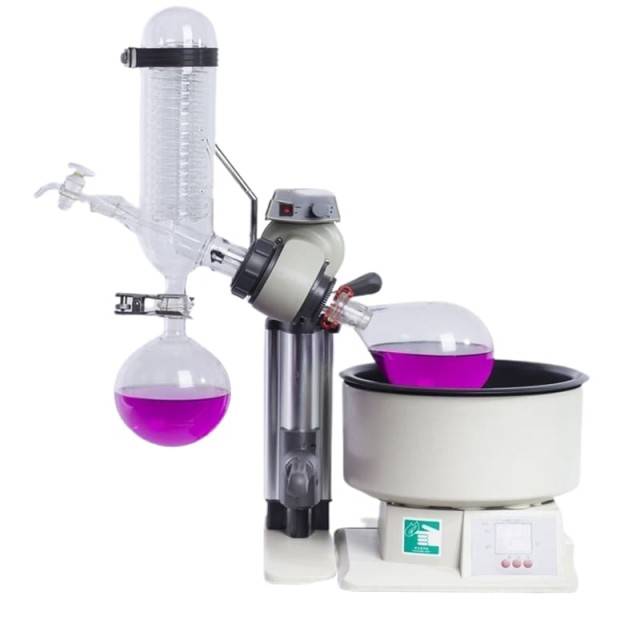
传热温差
通过真空减压增加传热温差是提高中药提取物蒸发效率的关键策略。这种方法利用热力学原理,创造一个溶剂沸点显著降低的环境,从而加速蒸发过程。真空减压可有效降低溶液周围的环境压力,从而在较低温度下实现更快、更高效的蒸发。
这种方法不仅节约能源,还能最大限度地减少中草药提取物中常见的精细药用化合物的热降解。通过保持较低的操作温度,大大降低了化学变化或活性成分损失的风险。蒸发效率的提高可加快处理时间,提高浓缩提取物的产量,这对生产有效的药物配方至关重要。
为说明真空减压对传热的影响,请看下表:
| 条件 | 压力(千帕) | 沸点(°C) | 蒸发率 |
|---|---|---|---|
| 大气压 | 101.3 | 100 | 中等 |
| 真空减压 | 50 | 38 | 高真空减压 |
| 真空减压 | 20 | 20 | 极高 |
如表所示,压力的降低大大降低了沸点,从而提高了溶剂的蒸发速度。蒸发率的提高与传热温差的改善成正比,因此真空减压是中药提取物精制过程中不可或缺的技术。
总传热系数
提高总传热系数是优化中药提取物精制过程中蒸发和浓缩效率的关键。该系数量化了热量从加热源传递到溶液的速度,直接受到系统内热阻的影响。
热阻通常由隔热层、结垢或不良热交换表面造成,阻碍了热量的有效传递。通过系统地解决这些问题,如清洁热交换表面、改善隔热性能和优化传热设备的设计,可以显著降低整体热阻。热阻的降低可转化为更高的总传热系数,从而加快蒸发速度,提高提取物的浓缩效率。
为了说明这一点,请考虑以下导致热阻的因素及其相应的解决方案:
| 热阻因素 | 解决方案 |
|---|---|
| 热交换器上的污垢 | 定期清洁和维护,清除沉积物。 |
| 隔热性能差 | 改进隔热材料,减少热量损失。 |
| 设备设计不合理 | 重新设计热交换器,提高表面积利用率。 |
通过实施这些策略,旋转蒸发仪可以实现更高效的热传递,从而改进蒸发和浓缩过程。在传统中药提炼过程中,保持活性化合物的完整性至关重要,因此这种优化尤为关键。
结论
旋转蒸发仪的优势
旋转蒸发仪有几个明显的优势,使其特别适用于中药制剂的精制和浓缩。其主要优势之一是能够在低温条件下运行,这对于保存传统中药的微妙化学成分至关重要。这种低温操作是通过集成真空系统实现的,该系统可降低溶剂的沸点,从而在不使药用化合物受高温影响的情况下实现高效蒸发。
此外,旋转蒸发仪在溶剂回收方面表现出色,而这正是制药业的一个关键环节,因为如果管理不当,溶剂通常既昂贵又对环境有害。这些设备的连续进料系统可确保最大限度地回收溶剂,从而减少浪费和运营成本。
另一个显著优势是旋转蒸发仪提供的均匀传热。传统蒸馏设备可能会导致加热不均匀和敏感化合物的潜在降解,而旋转蒸发仪则不同,它能在蒸发表面均匀分布热量。这得益于旋转时产生的向心力,它能在蒸发瓶内表面形成一层薄而均匀的液体样品膜。这样大的受热面积可确保较高的蒸发效率,使蒸发过程更快、更有效。
总之,旋转蒸发仪集低温操作、高效溶剂回收和均匀传热于一身,是中药制剂精制和浓缩过程中不可或缺的工具。
